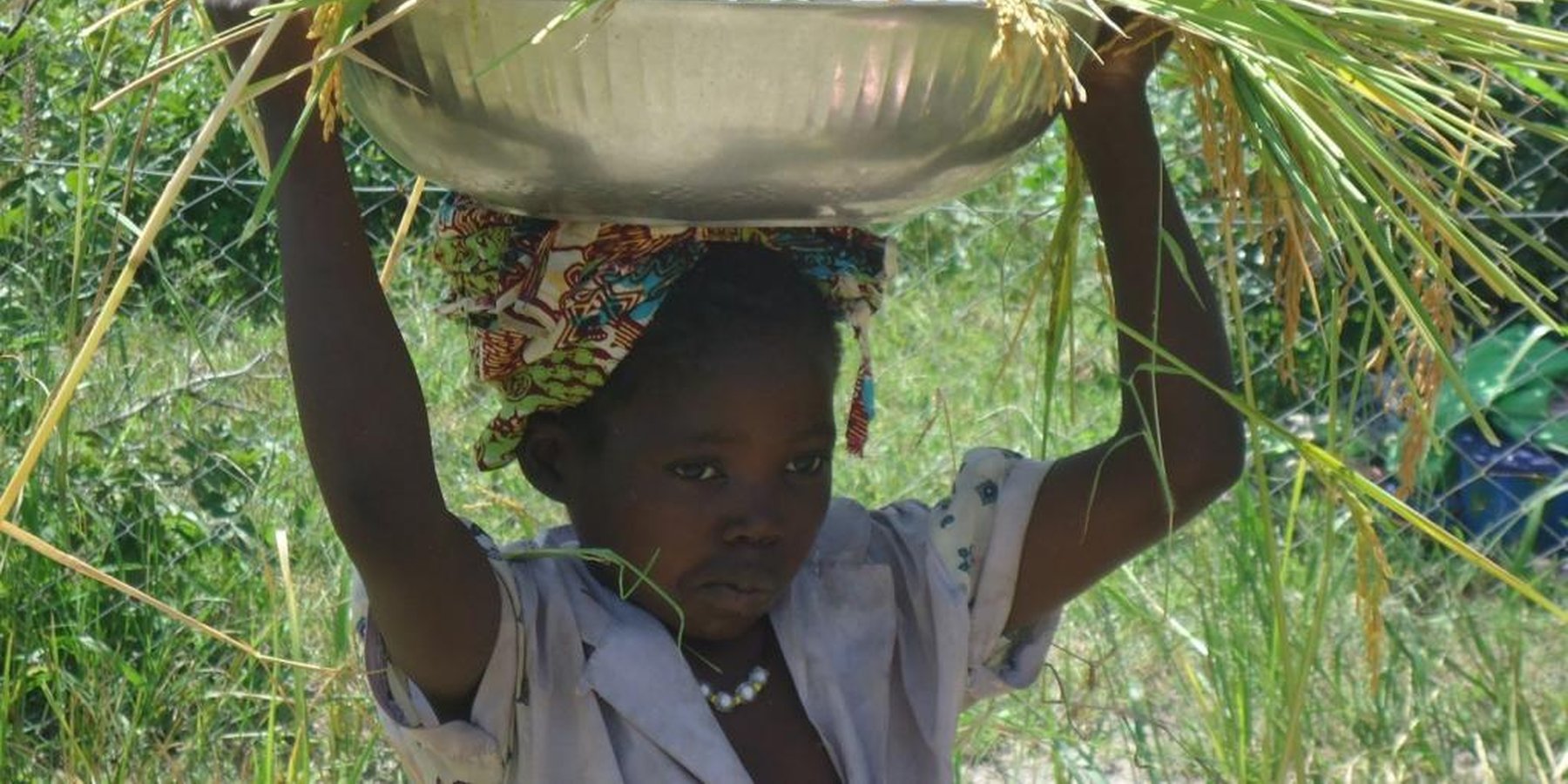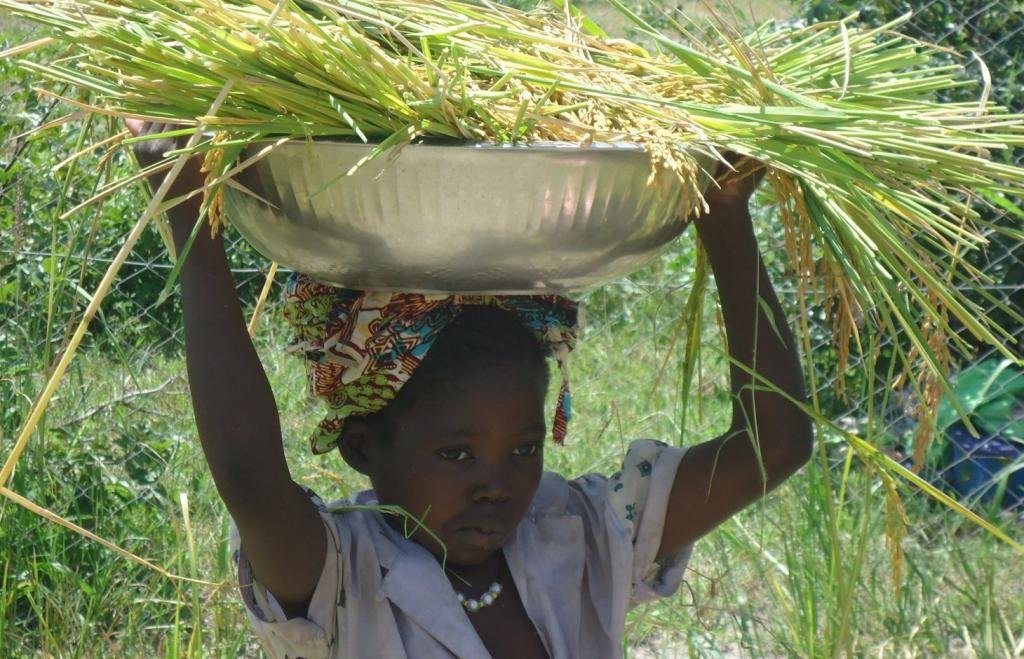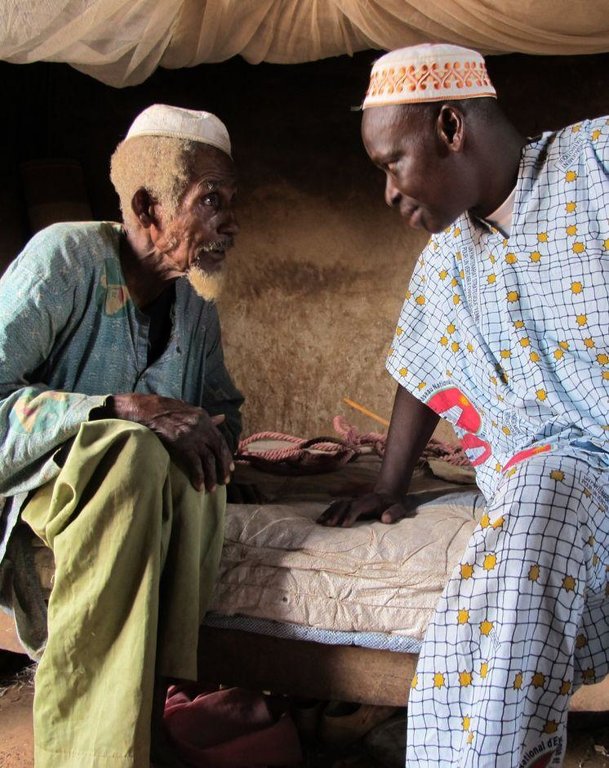Agricultural credit and start-up funding for small-scale irrigation cooperatives [马里]
- 创建:
- 更新:
- 编制者: Dieter Nill
- 编辑者: –
- 审查者: Laura Ebneter
Crédit agricole et fonds de démarrage pour les coopératives dans l’irrigation de proximité
approaches_2508 - 马里
查看章节
全部展开 全部收起1. 一般信息
1.2 参与方法评估和文件编制的资源人员和机构的联系方式
SLM专业人员:
Dembele Célestin
celestin.dembele@helvetas.org
HELVETAS - Swiss Intercooperation
马里
SLM专业人员:
Doumbia Moussa
mtdoumbia@yahoo.fr
Association for the Development and Protection of the Environment (ADEPE Mali)
马里
Tamini Jacques
jacques.tamini@helvetas.org
HELVETAS - Swiss Intercooperation
马里
有助于对方法进行记录/评估的机构名称(如相关)
Deutsche Gesellschaft für Internationale Zusammenarbeit (GIZ) - 德国有助于对方法进行记录/评估的机构名称(如相关)
HELVETAS (Swiss Intercooperation)1.3 关于使用通过WOCAT记录的数据的条件
(现场)数据是什么时候汇编的?:
01/07/2012
编制者和关键资源人员接受有关使用通过WOCAT记录数据的条件。:
是
2. SLM方法的描述
2.1 该方法的简要说明
Providing lowland farmer cooperatives with self-managed, self-renewing financial resources for the purpose of facilitating members’ access to farming inputs.
2.2 该方法的详细说明
该方法的详细说明:
Once the infrastructure has been put in place, cooperatives are supported in drawing up their cropping plans (rice and vegetable growing). This support is provided in the context of value enhancement. The cropping plans include forecasting in relation to sites and the input needs of member farmers. The funds provided by the project are targeted towards supporting the empowerment of cooperatives and constitute non-repayable grants. Cooperatives use these financial resources to provide their members with loans to grow crops. When these crops are sold, the loans are repaid to the cooperatives along with a small percentage of interest to renew the loan facility. The loan awarding system, interest rates and repayment deadline are clearly defined by the cooperative. Women have access to gender-specific mechanisms, such as a facility to access credit without providing any personal contribution. The grant is awarded following a capacity-building process focusing on the management and governance of the cooperative. Following negotiations, the programme funds the cooperative’s cropping plan on the basis of a collaboration agreement. Support with managing the funds is delivered by a consultant. The grant is paid into the cooperative’s bank account. The cooperative organises the procurement of inputs, in collaboration with the service provider. Loans are provided in kind (seed, fertilisers, pesticides, etc.) rather than as cash. Those tasked with managing the cooperative are given training in how to use a range of management tools (drawing up cropping plans; keeping stock inventory, loan and repayment records; managing removal and delivery receipts; etc.). At the end of the growing season, the loans are repaid in kind (seed) and in cash (fertilisers and fungicides) in accordance with a predetermined timetable, thus replenishing the fund.
The structuring, organisational strengthening and management capacity building activities are delivered by the consultant from the outset of the scheme’s implementation phase. Groups of actors are encouraged to organise themselves as cooperatives (women and men rice growers, vegetable and other kinds of growers, etc.). These cooperatives, with the support of the consultancies, act as the representative for managing funds. They draw up their cropping plans (list of member producers and their farmland, and evaluation of the input requirements requested by producers) and define the system for awarding loans (the access conditions, repayment methods, timetables and interest levels are set by the cooperatives). An agreement setting out the ways in which the programme will provide support through a contracted service provider is signed. Funds are paid into the relevant bank account and the cooperative then procures the inputs. The cooperative managers, using the management tools at their disposal, distribute the inputs to producers. A public audit is organised to inform members about the status of loans. The recovery of loans with interest makes it possible to replenish the fund (with payments paid into the cooperative’s bank account). The public audit into the loan repayment situation is a medium for deploying coercive measures to recover unpaid loans.
The cooperatives catalogue needs, coordinate the preparation of the cropping plan, set the access conditions for loans, undertake procurement and ensure the recovery of loans from members. The communes participate in debriefings, facilitate the settlement of misunderstandings between producers and cooperatives, and monitor technical support provision. The intermunicipal body facilitates communication and negotiation between communes and the programme. Consultancies deliver management training and advisory support on technical aspects of farming, and facilitate the procurement of inputs suited to the farming condition of each site. Technical services participate in evaluation meetings and act as advisors to the service providers and programme team.
2.3 该方法的照片
2.5 采用该方法的国家/地区/地点
国家:
马里
区域/州/省:
Mali
有关地点的进一步说明:
Bougouni, Kolondiéba, Yanfolila
2.6 该方法的开始和终止日期
注明开始年份:
2008
2.7 方法的类型
- 基于项目/方案
2.8 该方法的主要目的/目标
Providing lowland farmer cooperatives with self-managed, self-renewing financial resources for the purpose of facilitating members’ access to farming inputs.
The SLM Approach addressed the following problems: lack of cash to invest in SLM
2.9 推动或妨碍实施本办法所适用的技术的条件
财务资源和服务的可用性/可得性
- 阻碍
lack of cash to invest in SLM
Treatment through the SLM Approach: Providing lowland farmer cooperatives with self-managed, self-renewing financial resources for the purpose of facilitating members’ access to farming inputs.
3. 相关利益相关者的参与和角色
3.1 该方法涉及的利益相关者及其职责
- 当地土地使用者/当地社区
- SLM专家/农业顾问
- NGO
- 地方政府
- 国家政府(规划者、决策者)
3.2 当地土地使用者/当地社区参与该方法的不同阶段
| 当地土地使用者/当地社区的参与 | 指定参与人员并描述活动 | |
|---|---|---|
| 启动/动机 | 被动 | |
| 计划 | 互动 | |
| 实施 | 互动 | |
| 监测/评估 | 互动 | |
| Research | 被动 |
3.4 有关SLM技术选择的决策
具体说明谁有权决定选择要实施的技术:
- 主要是土地使用者,由SLM专家提供支持
解释:
Decisions on the method of implementing the SLM Technology were made by mainly by land users supported by SLM specialists
4. 技术支持、能力建设和知识管理
4.1 能力建设/培训
是否为土地使用者/其他利益相关者提供培训?:
是
明确受训人员:
- 土地使用者
- 现场工作人员/顾问
培训形式:
- 公开会议
- 课程
涵盖的主题:
Consultancies deliver management training and advisory support on technical aspects of farming. Those tasked with managing the cooperative are given training in how to use a range of management tools (drawing up cropping plans; keeping stock inventory, loan and repayment records; managing removal and delivery receipts; etc.).
4.2 咨询服务
土地使用者有权使用咨询服务吗?:
是
指明是否提供了咨询服务:
- 在土地使用者的土地上
说明/注释:
Name of method used for advisory service: Providing lowland farmer cooperatives with self-managed, self-renewing financial resources ; A local farming advisory mechanism active in the first few years of the scheme ensures high levels of productivity, which, in turn, facilitates the repayment of loans. Holding public audits to report on accounts ensures that the system is transparent.
Advisory service is quite adequate to ensure the continuation of land conservation activities
4.3 机构强化(组织发展)
是否通过这种方法建立或加强了机构?:
- 是,适度
具体说明机构的强化或建立程度:
- 本地
具体说明支持类型:
- 财务
- 能力建设/培训
4.4 监测和评估
监测和评估是该方法的一部分吗?:
是
注释:
socio-cultural aspects were ad hoc monitored by project staff through observations
economic / production aspects were ad hoc monitored by project staff, land users through measurements
management of Approach aspects were ad hoc monitored by project staff, land users through observations
There were no changes in the Approach as a result of monitoring and evaluation: None
There were no changes in the Technology as a result of monitoring and evaluation: None
4.5 研究
研究是该方法的一部分吗?
是
明确话题:
- 社会学
- 经济/市场营销
- 生态学
- 技术
5. 融资和外部物质支持
5.1 该方法中SLM组成部分的年度预算
注释(例如主要的资助来源/主要捐助者):
Approach costs were met by the following donors: international non-government: 100.0%
5.2 为土地使用者提供财政/物质支援
土地使用者是否获得实施该技术的财政/物质支持?:
是
如果是,请具体说明支持的类型、条件和提供者:
The funds provided by the project are targeted towards supporting the empowerment of cooperatives and constitute non-repayable grants. Cooperatives use these financial resources to provide their members with loans to grow crops. When these crops are sold, the loans are repaid to the cooperatives along with a small percentage of interest to renew the loan facility. The loan awarding system, interest rates and repayment deadline are clearly defined by the cooperative. Women have access to gender-specific mechanisms, such as a facility to access credit without providing any personal contribution.
5.3 对特定投入的补贴(包括劳动力)
如果土地使用者的劳动力是一项重要的投入,那么是不是:
- 获得其他物质支持
注释:
Loans are provided in kind (seed, fertilisers, pesticides, etc.) rather than as cash.
5.4 信用
是否根据SLM活动的方法给予信用值?:
是
对条件(利率、回报等)进行具体说明:
repayment conditions: The funds provided by the project are used to buy inputs on the basis of the cropping plan. The start-up fund granted by the programme pays for the initial stock. Once this stock has been procured, the inputs are distributed to members according to their stated requirements. The repayment schedule and the amount of interest that must be paid are communicated. Growers’ production activities are supported and monitored by the consultant and the management committee. Following the harvesting and sale of crops, in accordance with the deadline set, the loans are recovered along with their interest payments and the fund is replenished for the following growing season. During the different implementation stages, the cooperative holds public audits in the presence of the commune authorities to report on how the cooperative is being managed; the aim being to build trust between the cooperative and its members.
6. 影响分析和结论性陈述
6.1 方法的影响
该方法是否帮助土地使用者实施和维护SLM技术?:
- 否
- 是,很少
- 是,中等
- 是,支持力度很大
A local farming advisory mechanism active in the first few years of the scheme ensures high levels of productivity
该方法是否有助于社会和经济弱势群体?:
- 否
- 是,很少
- 是,中等
- 是,支持力度很大
Did other land users / projects adopt the Approach?
- 否
- 是,很少
- 是,中等
- 是,支持力度很大
The system has been applied in 19 sites across 15 communes in the circles of Bougouni, Kolondiéba and Yanfolila. In total, 2,150 producers – 81% of the farmers identified in the production areas – have benefited from the loan scheme. The approach has been in use since 2008.
Did the Approach lead to improved livelihoods / human well-being?
- 否
- 是,很少
- 是,中等
- 是,支持力度很大
Groups of actors are encouraged to organise themselves as cooperatives (women and men rice growers, vegetable and other kinds of growers, etc.). In total, 2,150 producers – 81% of the farmers identified in the production areas – have benefited from the loan scheme.
Did the Approach help to alleviate poverty?
- 否
- 是,很少
- 是,中等
- 是,支持力度很大
70% of the beneficiaries have improved their production levels. This management experience enables farmers to operate as entrepreneurs and to accurately assess their profitability
6.2 土地使用者实施SLM的主要动机
- 增加生产
- 支付/补贴
6.3 方法活动的可持续性
土地使用者能否维持通过该方法实施的措施(无外部支持的情况下)?:
- 是
6.4 该方法的长处/优点
| 编制者或其他关键资源人员认为的长处/优势/机会 |
|---|
| Cooperatives are empowered to manage the funds. (How to sustain/ enhance this strength: It must be clearly communicated that the funds belong to the cooperative and are only granted once. The granting of in-kind (inputs) rather than cash loans curbs any attempts to stray from the objectives. ) |
| Since the programme began in 2008, the cooperatives have managed to achieve recovery rates of between 80% and 100%, and, with the system in place, 70% of the beneficiaries have improved their production levels. This management experience enables farmers to operate as entrepreneurs and to accurately assess their profitability. (How to sustain/ enhance this strength: Institutional and organisational strengthening plays a key role in achieving a successful outcome. ) |
| Following the granting of an initial ‘seed fund’, the financing mechanism grows and becomes sustainable on its own. |
| Evaluation meetings bring together actors from all the sites (commune authorities, cooperatives), consultancies and the programme team, serving to motivate actors and offering the opportunity to share experiences. |
| A local farming advisory mechanism active in the first few years of the scheme ensures high levels of productivity, which, in turn, facilitates the repayment of loans. Holding public audits to report on accounts ensures that the system is transparent. |
7. 参考和链接
7.1 方法/信息来源
- 实地考察、实地调查
- 与土地使用者的访谈
7.2 参考可用出版物
标题、作者、年份、ISBN:
Manual of Good Practices in Small Scale Irrigation in the Sahel. Experiences from Mali. Published by GIZ in 2014.
可以从哪里获得?成本如何?
http://star-www.giz.de/starweb/giz/pub/servlet.starweb
标题、作者、年份、ISBN:
2011 report: Accompagnement à la valorisation des ouvrages hydro-agricoles sur les sites de Blakala, Ména, Bafaga, Mamissa, Bogodougou, Nèrèkoro, Koloni et Mogoyafara [Support to enhance the value of hydro-agricultural schemes in Blakala, Ména, Bafaga, Mamissa, Bogodougou, Nèrèkoro, Koloni and Mogoyafara] (GSAD – Sahelian Development Support Group)
标题、作者、年份、ISBN:
2011 report: Accompagnement à la valorisation des ouvrages hydro-agricoles sur les sites de Niakobougou, Blendougou, N’Gala, Banko, Faradiélé, Sibirila, Solona, Farababougou [Support to enhance the value of hydro-agricultural schemes in Niakobougou, Blendougou, N’Gala, Banko, Faradiélé, Sibirila, Solona and Farababougou] (BEACIL – Consultancy and Advisory Support for Local Initiatives)
标题、作者、年份、ISBN:
2013 report: Collecte de données sur la valorisation des ouvrages hydro-agricoles réalisés dans le Pôle de Bougouni sur le financement
链接和模块
全部展开 全部收起链接
无链接
模块
无模块




